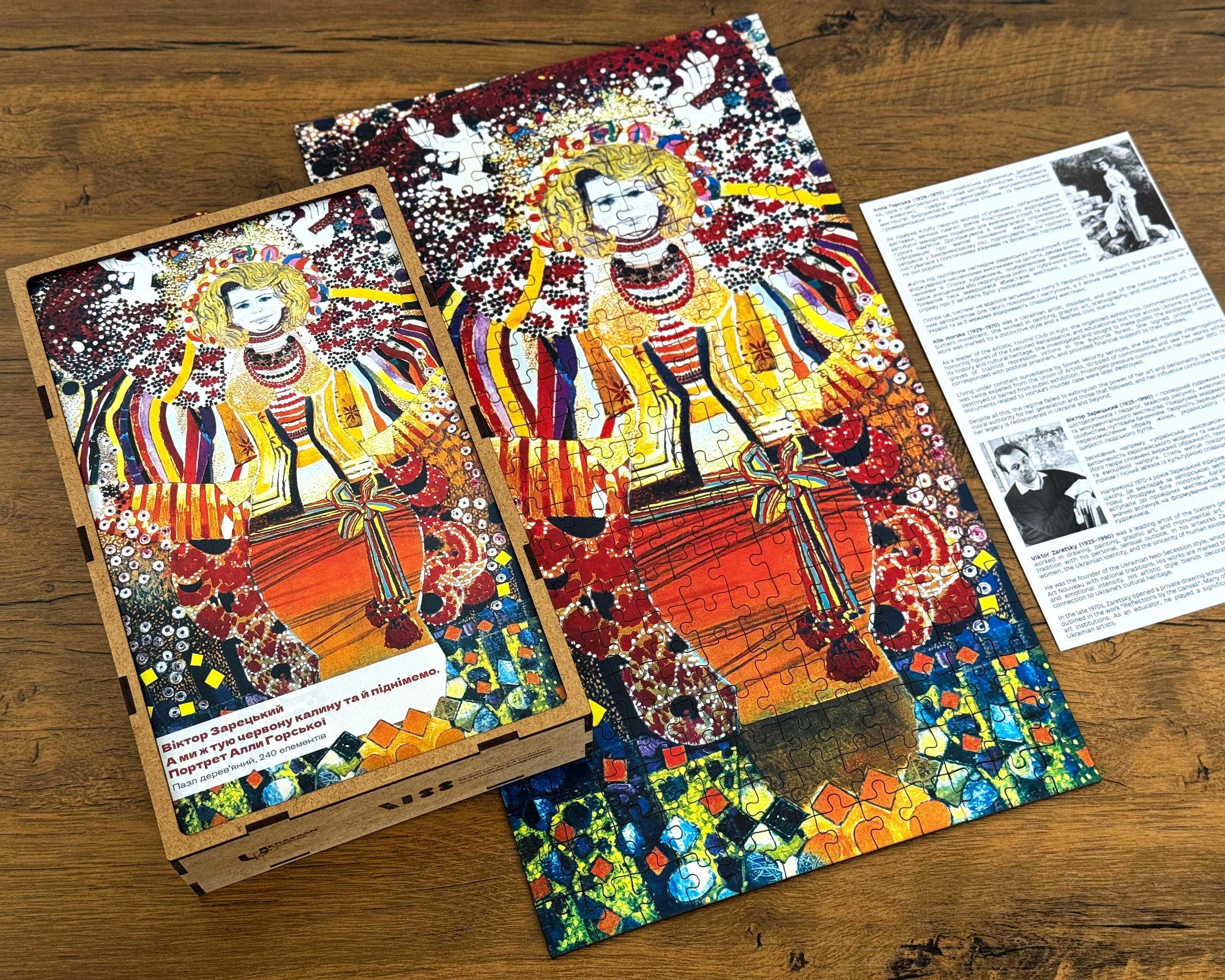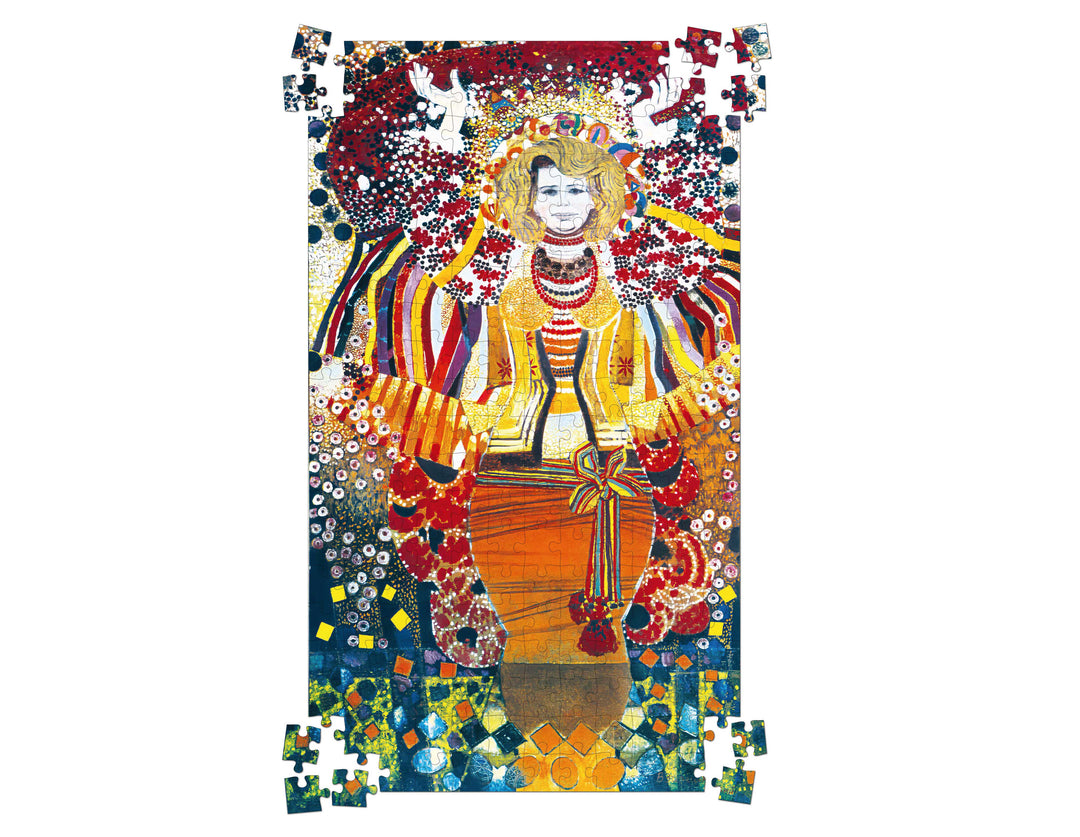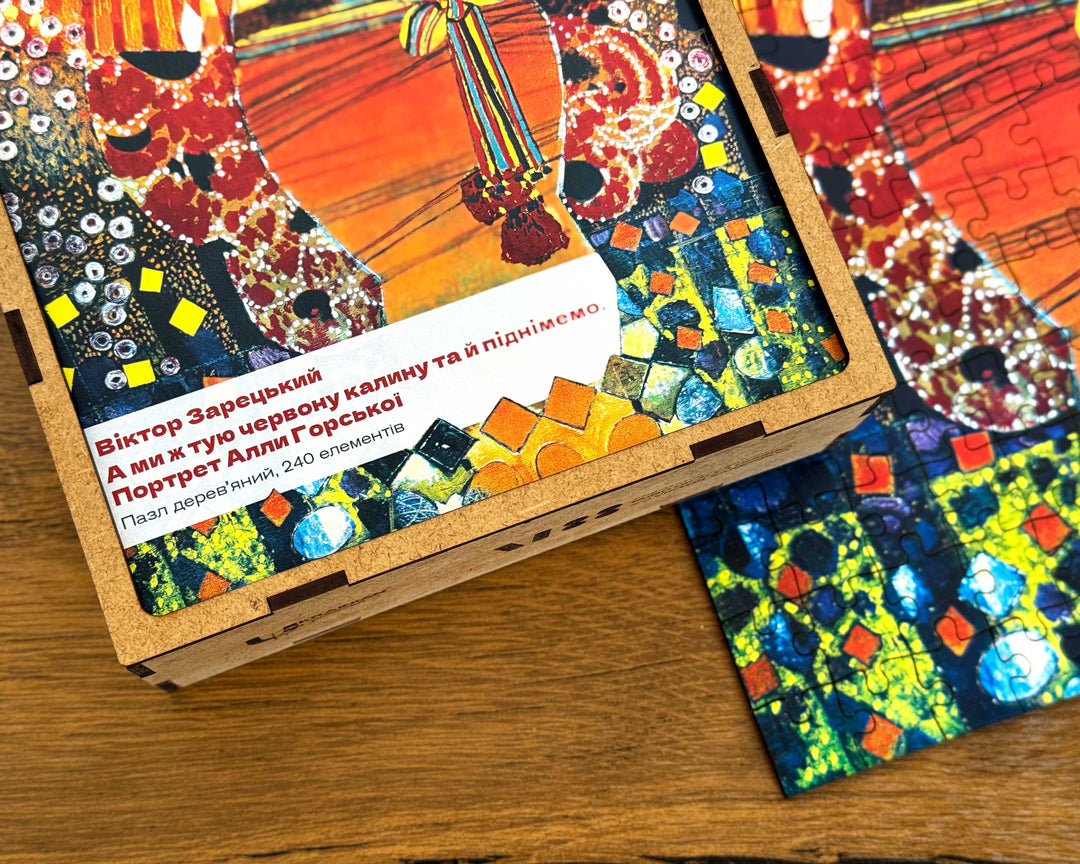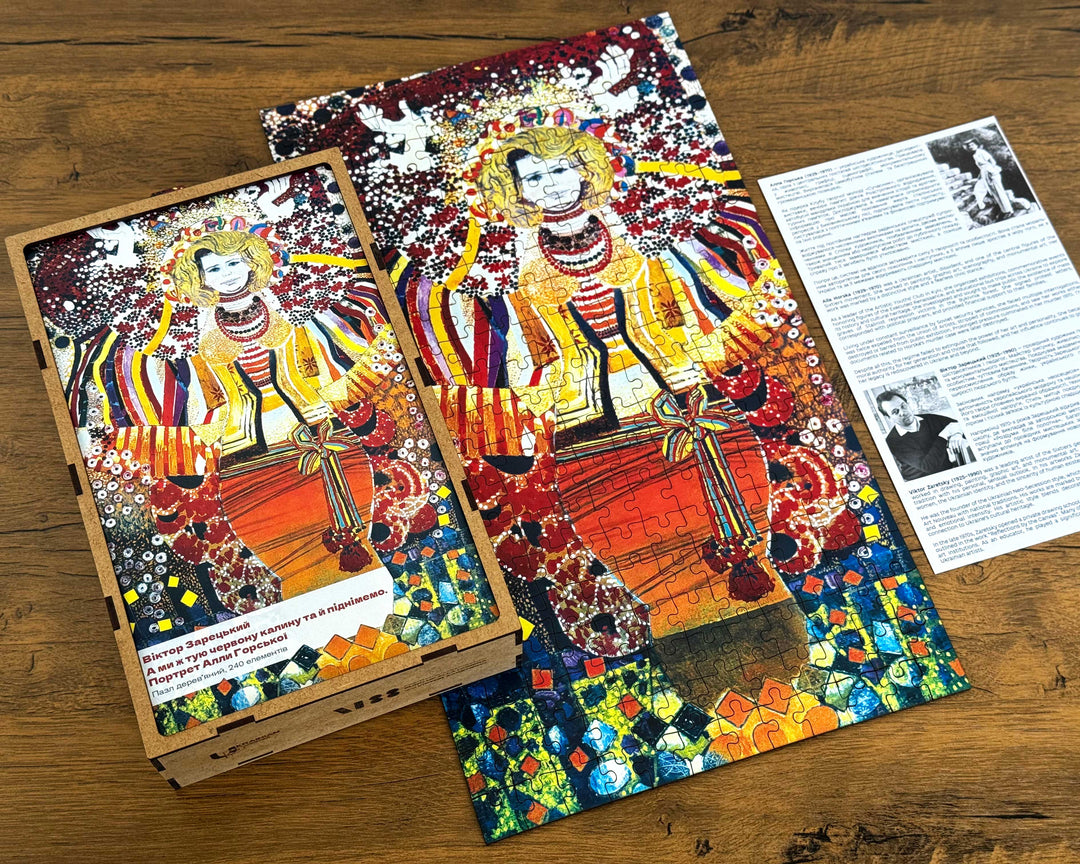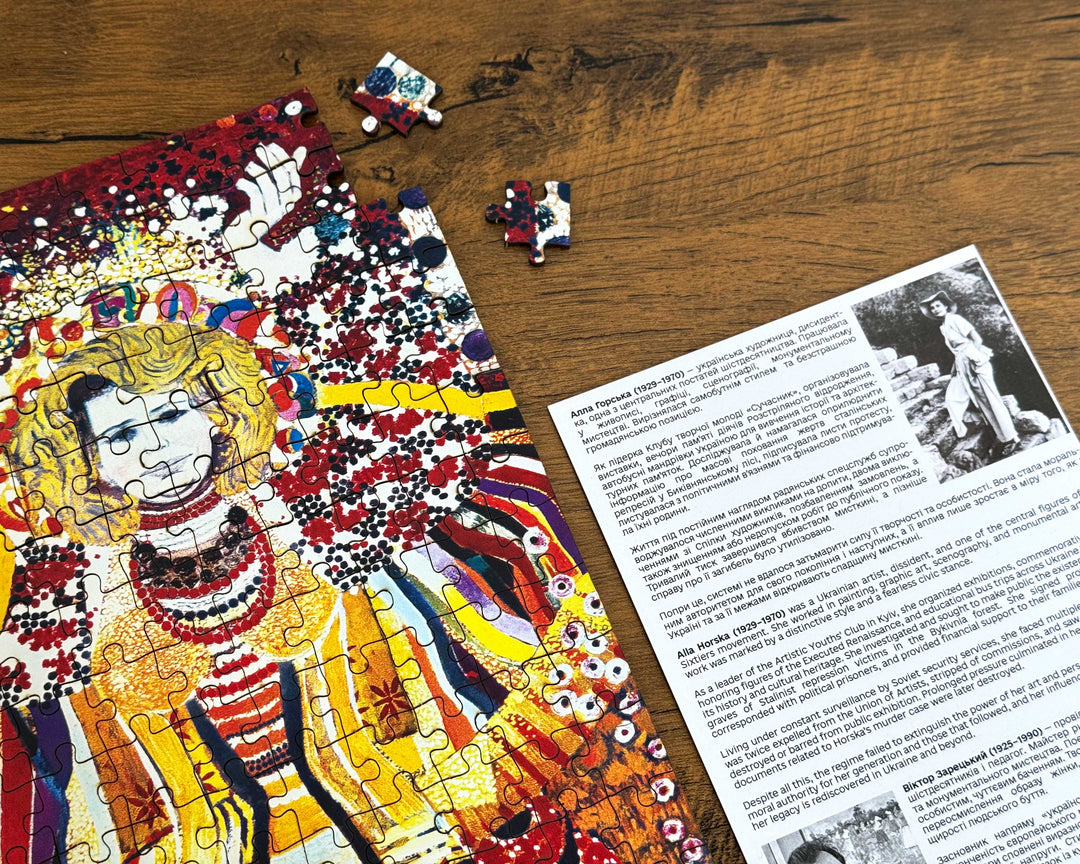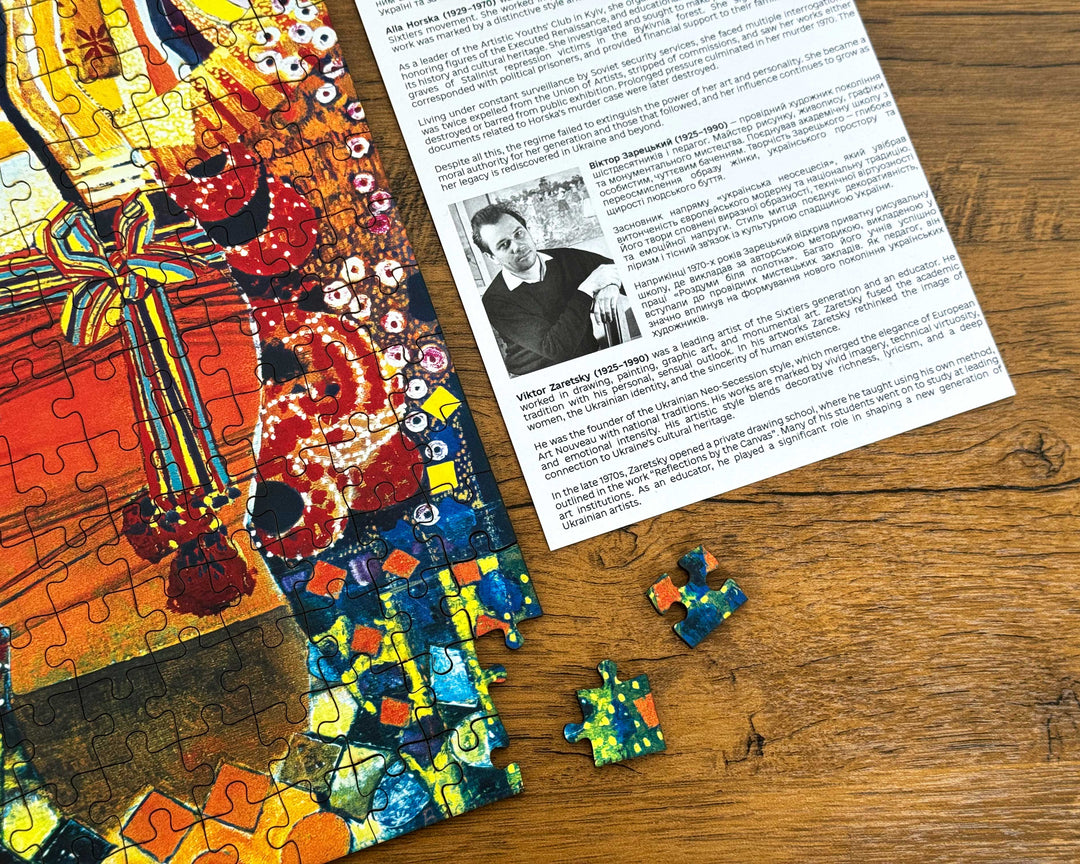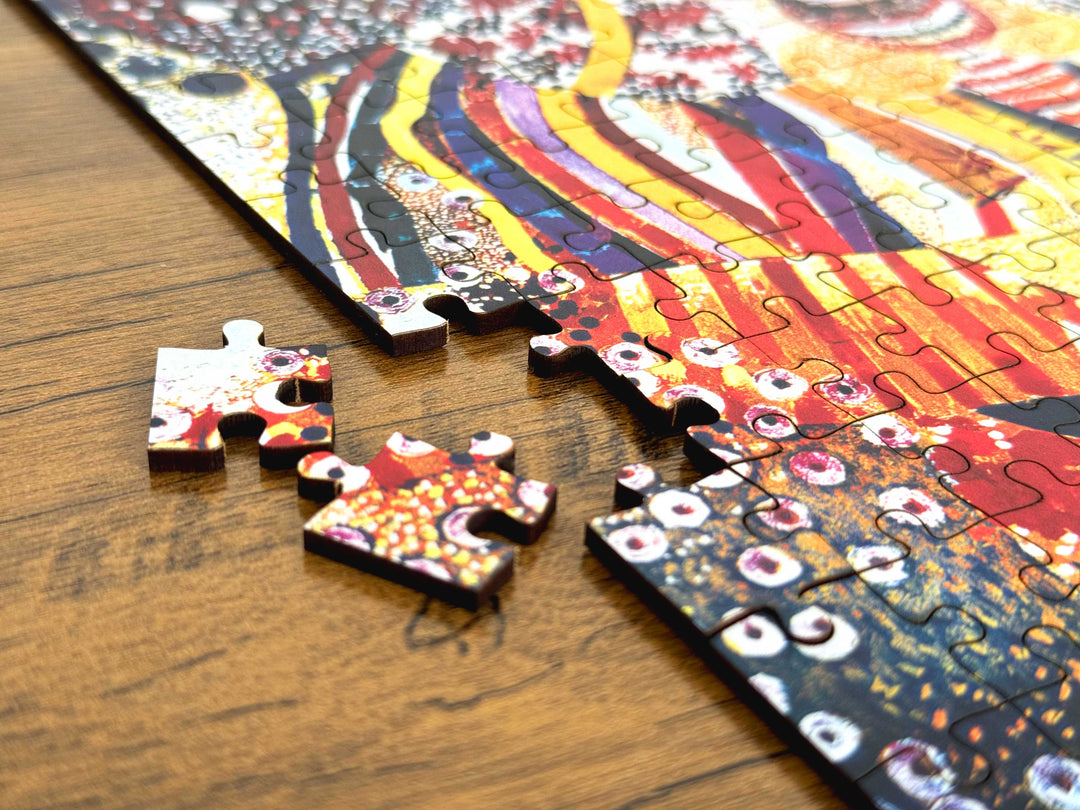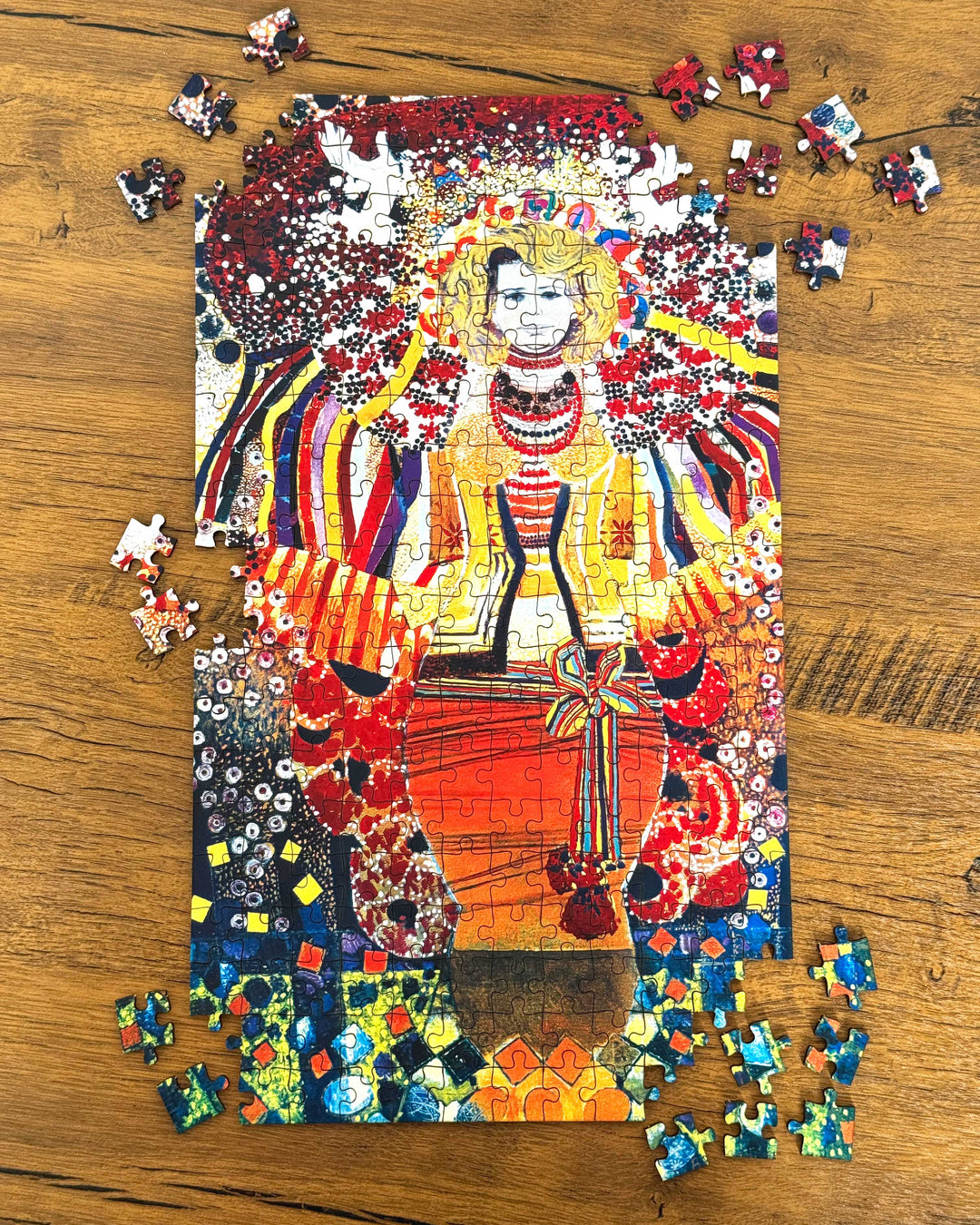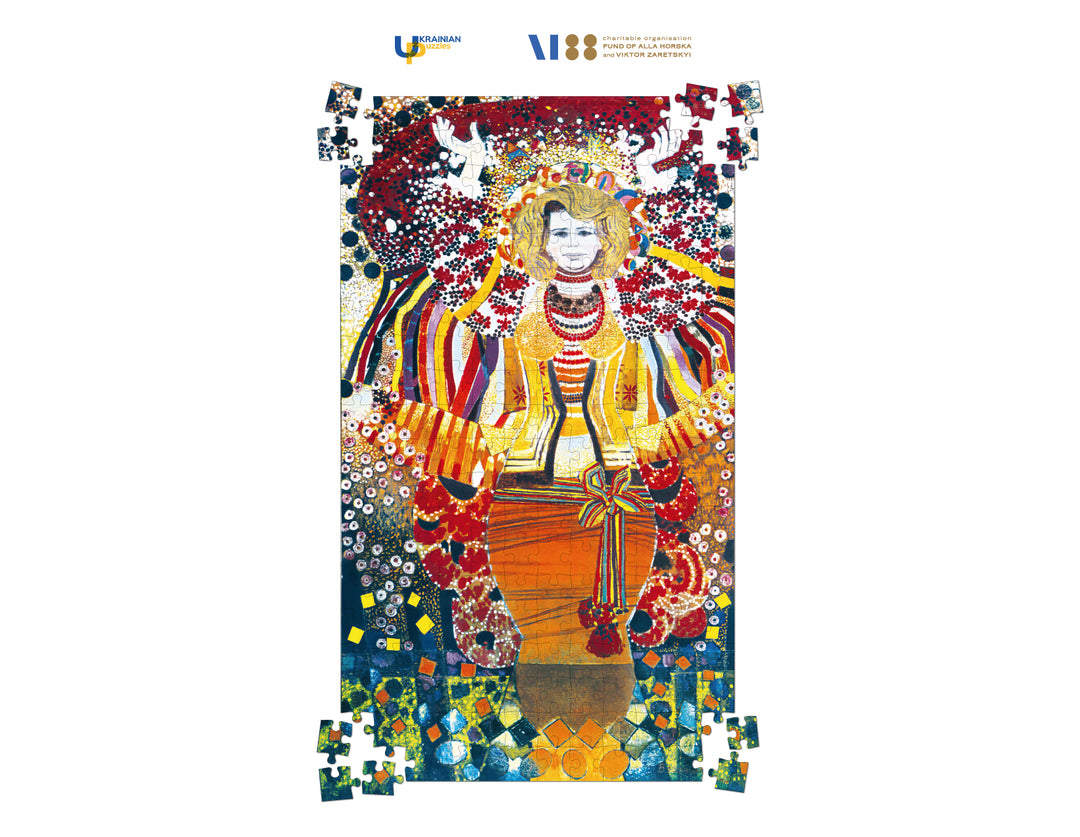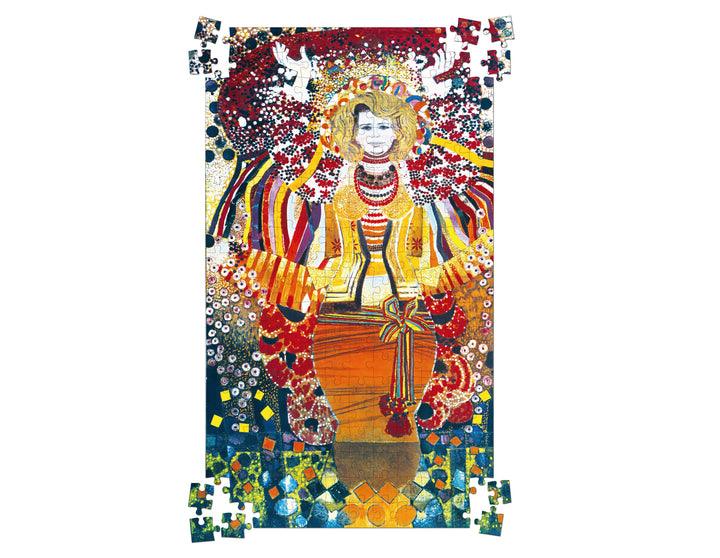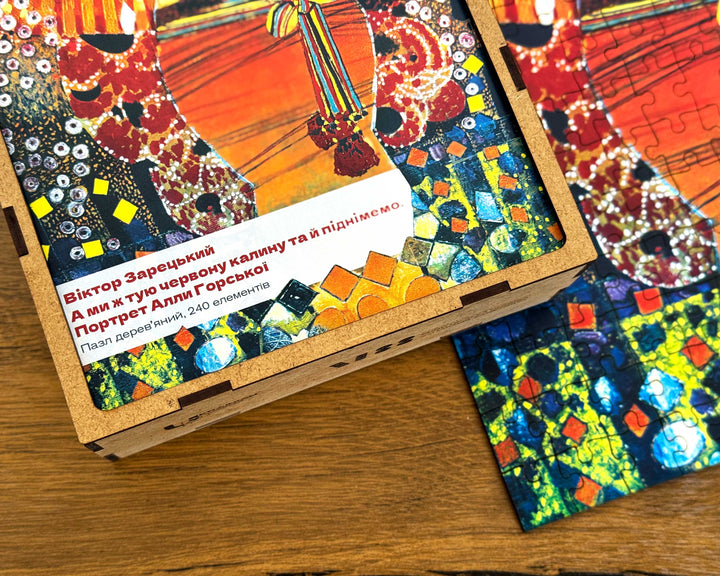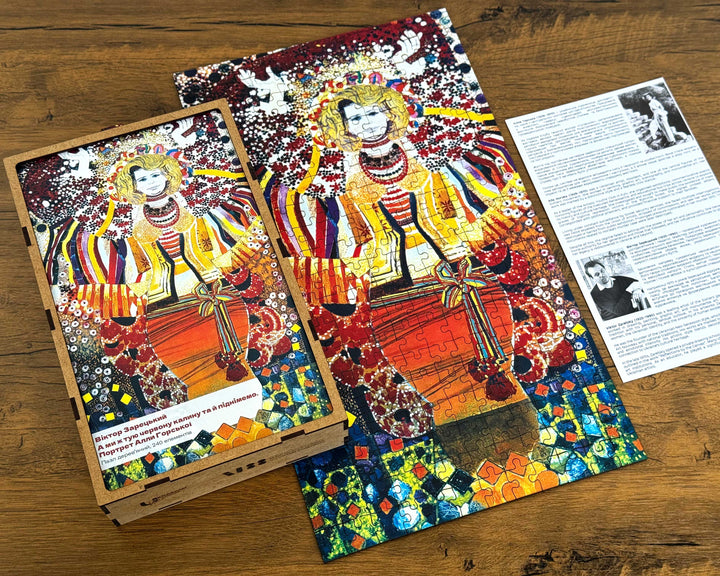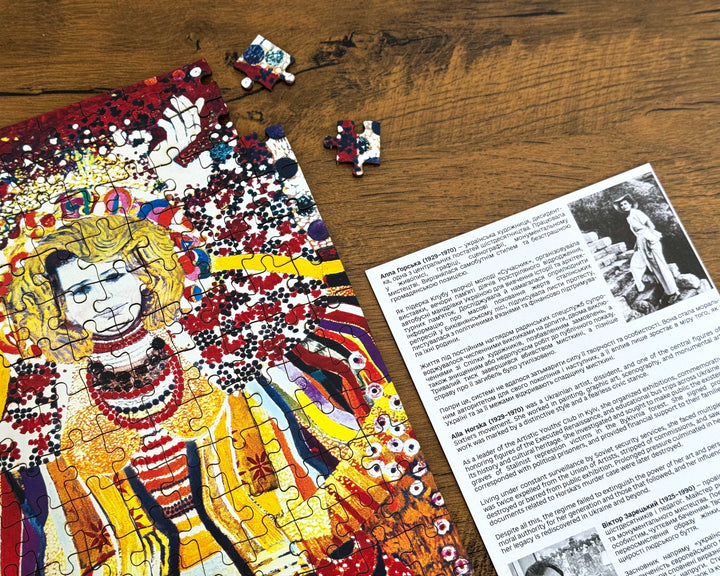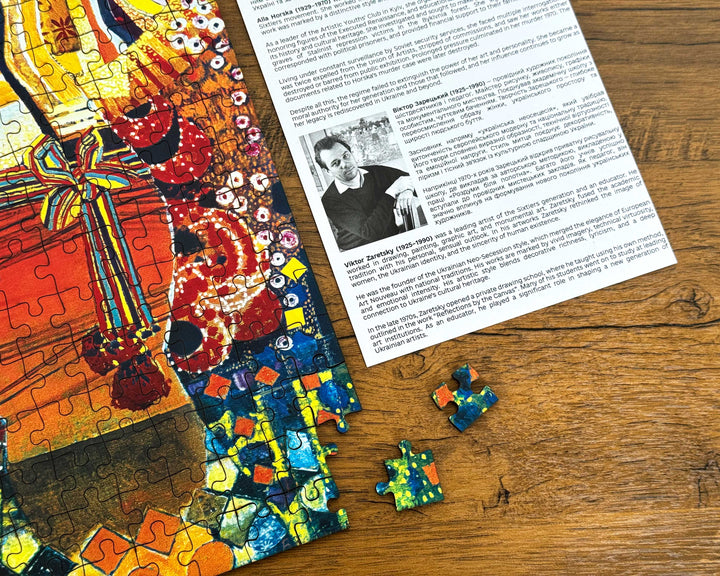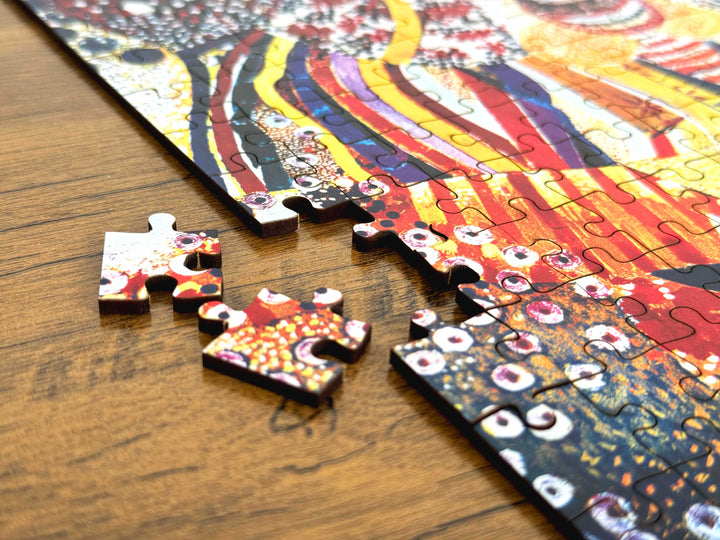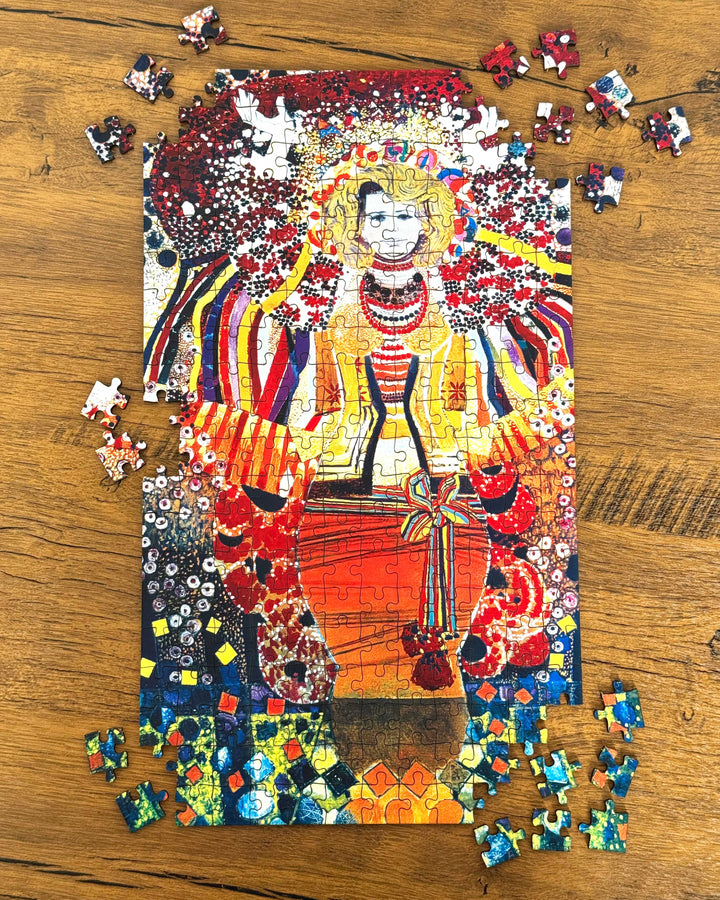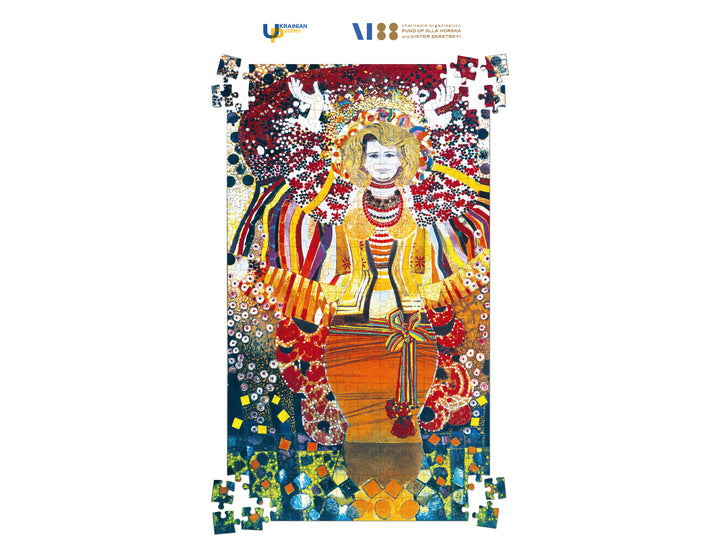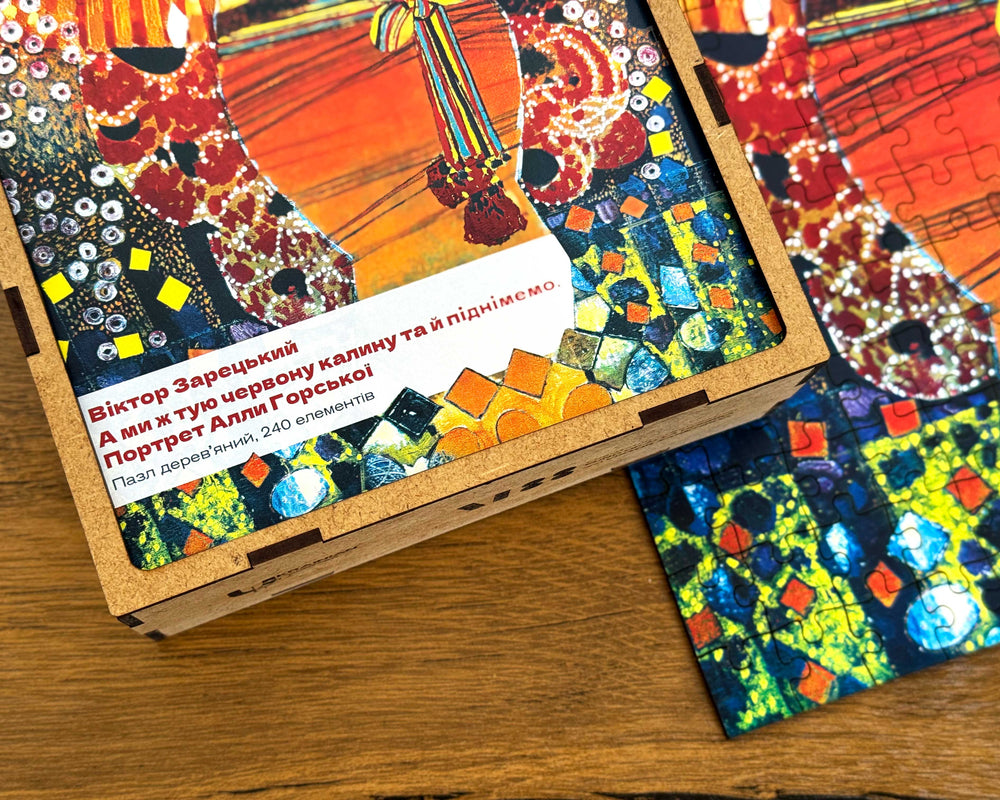The puzzle was created in cooperation with the charitable organization “Fund of Alla Horska and Viktor Zaretsky”.

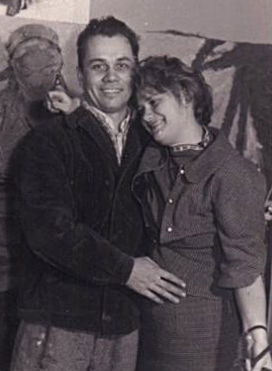
The artist couple Alla Horska and Viktor Zaretsky became one of the driving forces of the Ukrainian Sixtiers movement, bringing together a community of free thinkers and creators.
Together, they worked in the field of monumental art, shaping Ukrainian visual image that was national in content and modern in form. Their marriage was not only a personal bond but also a profound creative alliance in the struggle for Ukraine’s cultural self-assertion under Soviet oppression.
After Alla Horska was murdered by Soviet security services in 1970, Viktor Zaretsky endured unbearable trials. Her name was banned, and the memory of her was systematically erased. Yet their shared artistic legacy and civic stance were not extinguished: they have been revived — as a symbol of artistic resistance and inner freedom that continues to nourish and inspire Ukraine today.
The radiant, love-filled, and symbolic painting "And We Shall Raise That Red Viburnum Again" (1989) by Viktor Zaretsky is a deeply touching artistic gesture of remembrance and hope. It embodies the artist’s inner resilience and inspires new generations of Ukrainians in their struggle against evil.
In this portrait of Alla Horska, Viktor Zaretsky captured the idea of Ukraine’s revival — the cause for which the artist gave her life. The painting’s title comes from a key line in the anthem of the Sich Riflemen, "Oh, the Red Viburnum in the Meadow" (more known in English as the single "Hey, Hey, Rise Up!" by Pink Floyd featuring Andriy Khlyvnyuk of BoomBox).
The red viburnum was a recurring motif in Alla Horska’s work — a symbol of blood and loss, but also of memory, resistance, and the preservation of Ukrainian identity.

Alla Horska (1929–1970) was a Ukrainian artist, dissident, and one of the central figures of the Sixtiers movement. She worked in painting, graphic art, scenography, and monumental art. Her work was marked by a distinctive style and a fearless civic stance.
As a leader of the Artistic Youths' Club in Kyiv, she organized exhibitions, commemorative events honoring figures of the Executed Renaissance, and educational bus trips across Ukraine to explore its history and cultural heritage. She investigated and sought to make public the existence of mass graves of Stalinist repression victims in the Bykivnia forest. She signed protest letters, corresponded with political prisoners, and provided financial support to their families.
Living under constant surveillance by Soviet security services, she faced multiple interrogations, was twice expelled from the Union of Artists, stripped of commissions, and saw her works either destroyed or barred from public exhibition. Prolonged pressure culminated in her murder 1970. The documents related to Horska’s murder case were later destroyed.
Despite all this, the regime failed to extinguish the power of her art and personality. She became a moral authority for her generation and those that followed, and her influence continues to grow as her legacy is rediscovered in Ukraine and beyond.
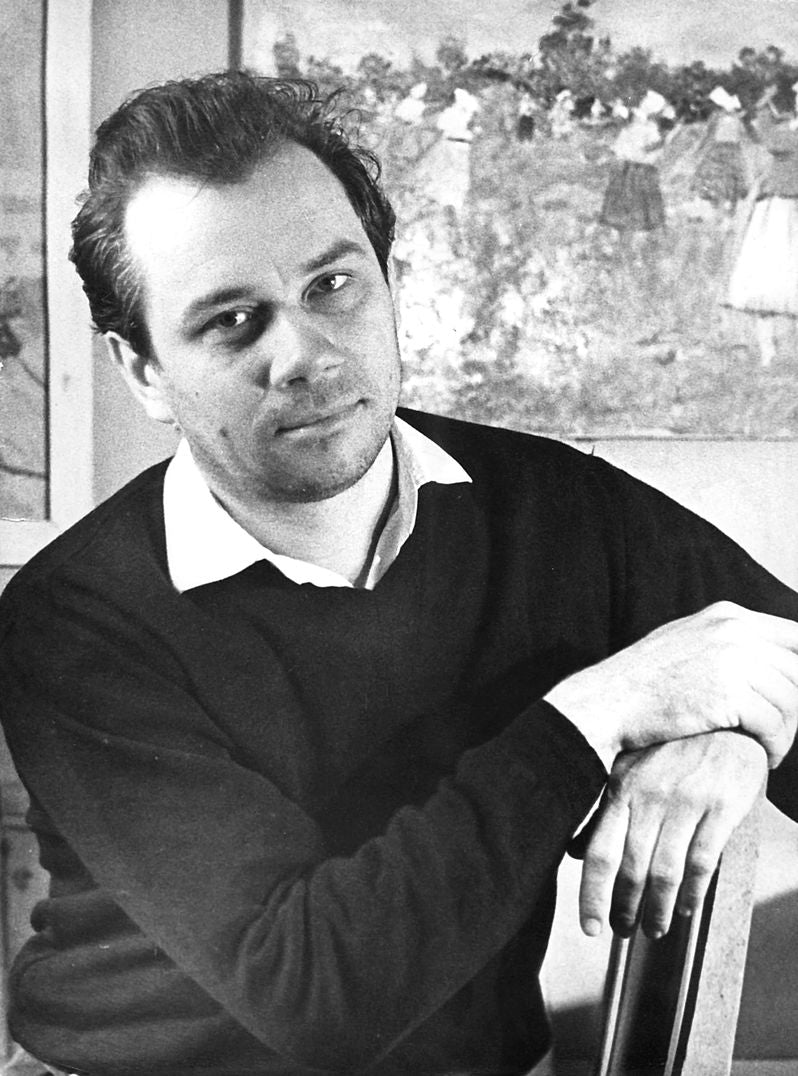
Viktor Zaretsky (1925–1990) was a leading artist of the Sixtiers generation and an educator. He worked in drawing, painting, graphic art, and monumental art. Zaretsky fused the academic tradition with his personal, sensual outlook. In his artworks Zaretsky rethinked the image of women, the Ukrainian identity, and the sincerity of human existence.
He was the founder of the Ukrainian Neo-Secession style, which merged the elegance of European Art Nouveau with national traditions. His works are marked by vivid imagery, technical virtuosity, and emotional intensity. His artistic style blends decorative richness, lyricism, and a deep connection to Ukraine’s cultural heritage.
In the late 1970s, Zaretsky opened a private drawing school, where he taught using his own method, outlined in the work “Reflections by the Canvas”. Many of his students went on to study at leading art institutions. As an educator, he played a significant role in shaping a new generation of Ukrainian artists.
